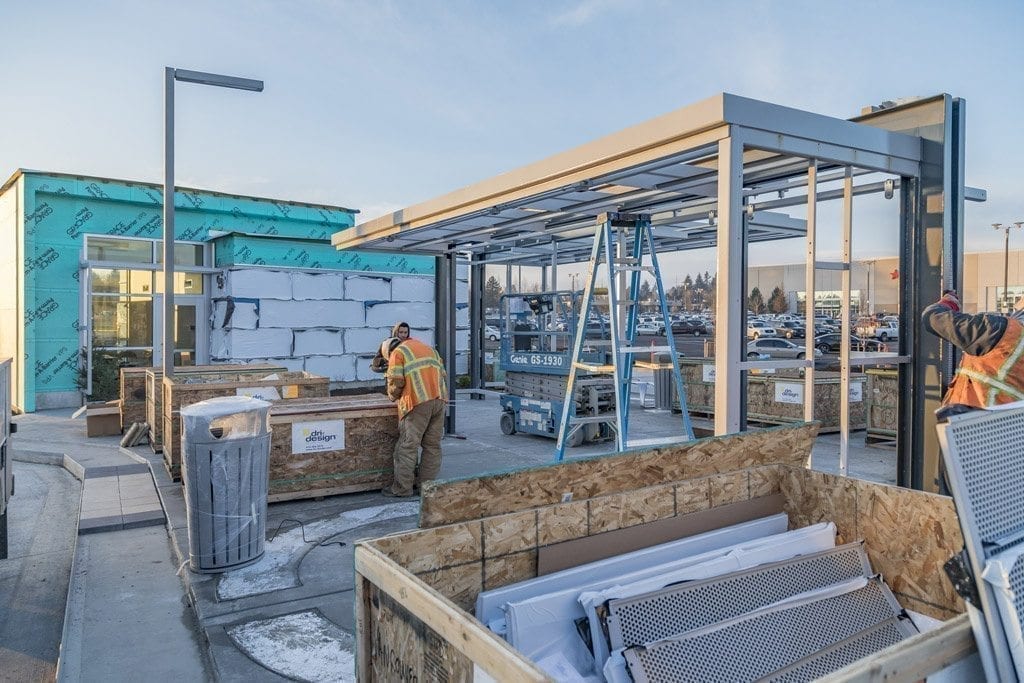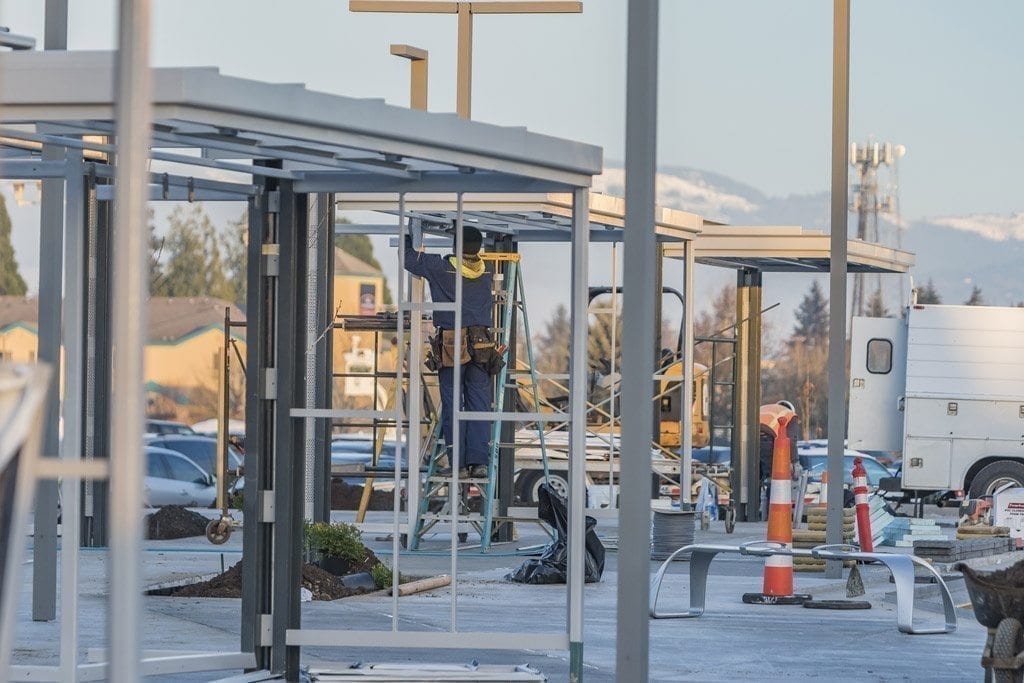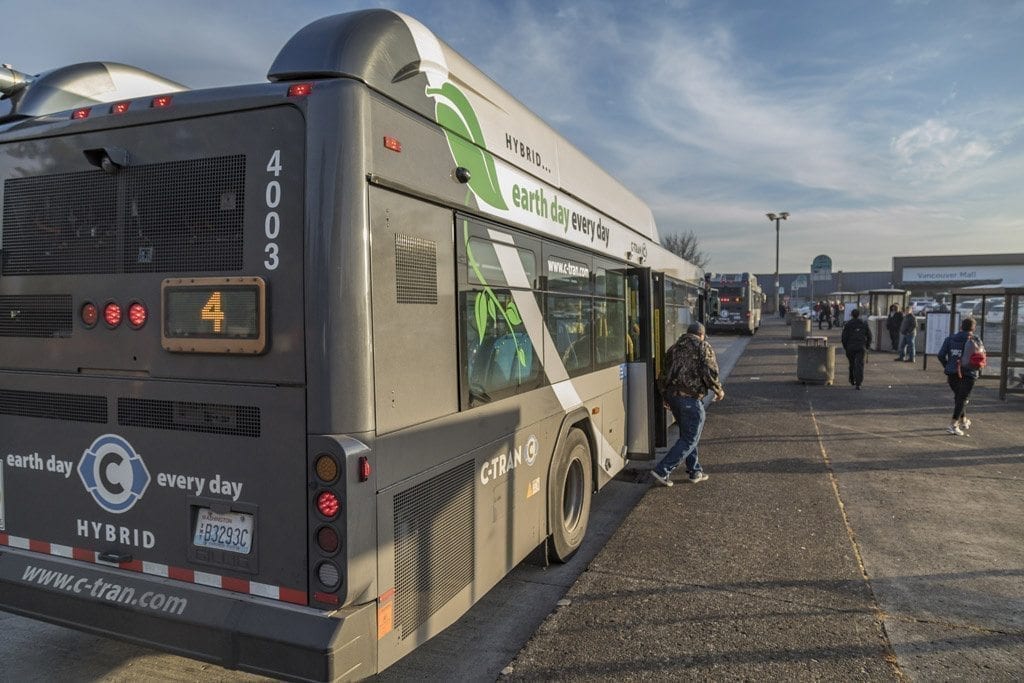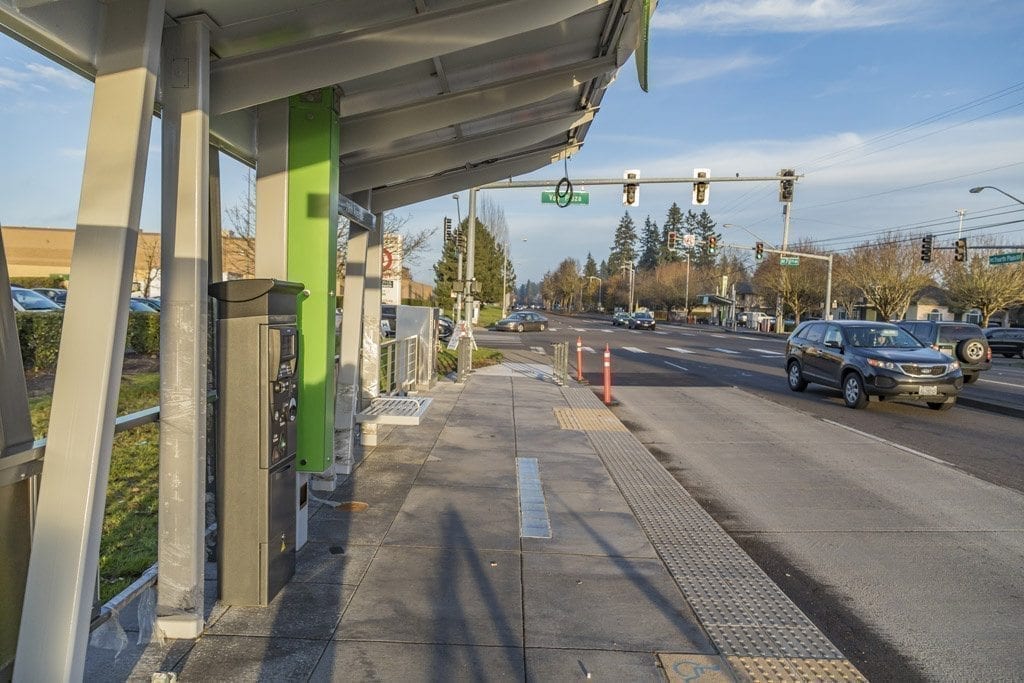VANCOUVER — “The Vine,” C-TRAN’s new bus rapid transit (BRT) system, begins service on Sun., Jan. 8, shuttling passengers between downtown Vancouver and the Vancouver Mall along Vancouver’s Fourth Plain Boulevard corridor.
For supporters of the $53 million rapid-transit project — the first of its kind in the Vancouver/Portland metro area — The Vine represents a faster, more reliable and more cost-effective form of public transportation.
“The Vine is designed to improve reliability, mobility and capacity on C-TRAN’s busiest corridor, getting people where they need to go quickly and efficiently,” stated C-TRAN Executive Director/CEO Jeff Hamm in a press release about the bus system’s grand opening. “We believe it will change the face of public transit in Clark County and the region.”

But for opponents of the project, who say C-TRAN’s push for rapid-transit buses flies in the face of what Clark County voters wanted, The Vine represents something far more controversial.
Outgoing Clark County Councilmember David Madore has long been an outspoken critic of the BRT system and says the opening of The Vine represents much more than just a new bus line for Vancouver.
“It is a scam and a scheme,” Madore says. “It’s all a deception … and I find it atrocious that a public agency (C-TRAN) can be so diabolical in deceiving the public and misusing their funds to create something that is extravagantly expensive and does not serve the people.”
What C-TRAN officials see as a “fix” to the long waits and overcrowded buses along Vancouver’s Fourth Plain Boulevard, Madore sees as the result of tampering with a system that was working just fine before BRT supporters got involved back in 2005.
“In 2005, we had the Trimet No. 6 bus going back and forth from Portland to downtown Vancouver and the (C-TRAN Route 4) bus going up and down Fourth Plain with no problems,” Madore explains. “But the scam artists — the special interests that would profit from this — had to cause problems.”
Madore contends that C-TRAN officials’ move to eliminate the Trimet bus that shuttled commuters from downtown Vancouver over the Interstate 5 bridge into north Portland was designed to “create a problem that they would have to solve.”
With a Trimet bus out of the picture, C-TRAN’s buses took up the slack, running from the Fourth Plain corridor to downtown Vancouver and across the I-5 bridge, Madore says, and getting trapped in the commuter, I-5 traffic took a toll on the Fourth Plain bus routes, which had, he says, been working just fine up until that point.
“Route 4 would cross the bridge and get stuck in traffic, which caused all the problems that occurred on Fourth Plain — the waits and the delays,” Madore says. “They had to break the system as an excuse for light rail and rapid transit.”
Ultimately, Clark County voters would reject measures to pay for light rail services — as well as rapid-transit services — within the C-TRAN system. Voters did pass a .2-percent increase in the sales and use tax in 2011 “to preserve C-TRAN local fixed route, limited, commuter and Connector service,” but Madore says that money was never meant to fund the type of high-capacity transit system that The Vine represents.
“There are places where high-capacity transit makes sense,” Madore says. “In cities where you have the kind of density where you’re above a certain (population) threshold, cars just don’t work. But those definitions are laughable here. We’re in Clark County, not in New York City. This is just not an appropriate solution for our area … and the voters here were clear in that they did not want to fund high-capacity transit.”
Advocates of Vancouver’s new rapid-transit system argue that The Vine does not constitute the type of high-capacity transit systems Clark County voters shot down in 2013. Instead, they say the project was always separate from the more controversial light rail system, which would have brought Portland’s Trimet MAX system into Vancouver.

At the July 8, 2014 C-TRAN Board of Directors meeting, when officials voted on whether the public transit agency should dedicate $7 million in C-TRAN reserve funds toward the required local match for the BRT project, C-TRAN Director of Planning and Development Scott Patterson said The Vine was separate from the light rail package put to voters “from the very first day in 2011.”
“The Federal Transit Administration (which funded 80 percent of the BRT project) has always considered it a separate project,” Patterson said at the 2014 meeting, after County Councilmember Tom Mielke brought up the issue. “The only connection was from an operational standpoint. BRT would have utilized the fixed-rail and the (light rail) stations in downtown Vancouver.”
After voters rejected the light rail proposal, Patterson said, C-TRAN leaders decided that the BRT project could still move forward.
Mielke wondered if the BRT was simply being used a step one to push through light rail in the future, asking Hamm and Patterson if the proposed rapid-transit bus line, with its raised platforms, was simply being crafted as a sort of collector for light rail.
“Light rail would have used the same platforms,” Mielke said. “As I recall, the BRT was a collector for light rail and the two were put together as a locally preferred project and moved forward as a package all the way through. It was always (packaged) with light rail.”
Patterson said the BRT never relied on voters’ approving light rail and the failed Columbia River Crossing (CRC) bridge project, which would have cost more than $3 billion to build a new Interstate 5 bridge and equip it with light-rail capabilities.
“The idea was to put them together,” Patterson said of the BRT and light rail system. “But the BRT never rested on the assumption that the CRC was going to happen.”

C-TRAN leaders say the BRT serves only a small percentage of Clark County area commuters crossing over the river into Portland. Instead, the new Vine system will serve mostly in-county and in-city riders going from one point in Vancouver to another point in Vancouver.
“The transit riders on Fourth Plain, about 80 percent of them get off somewhere in downtown Vancouver,” Patterson said at the 2014 meeting. “Only about 20 percent are crossing over to Portland.”
Hamm, CEO of C-TRAN added that, in his view, the BRT project “represents continued growth and development of Vancouver and Clark County.”
“Unlike C-TRAN’s major park and rides at Fisher’s and 99th Street, which are built to service commuters going into Portland, (The Vine) provides for citizens commuting within Clark County,” Hamm said.
The new Vine system replaces two Vancouver bus lines — Routes 4 and 44 — and uses larger, accordion-style buses equipped with on-board bike racks and easier systems for securing wheelchairs and other mobility devices. New boarding stations, constructed over the past year, offer level boarding platforms, reducing the wait-times for wheelchair lifts, and provide a way for people to buy tickets before they board the bus.
C-TRAN contends that about 6,000 people ride the Route 4 bus each day, adding up to more than two million riders every year. Amid reports of gradually declining ridership in 2015, C-TRAN officials said they hoped the new Vine system would boost ridership along the Fourth Plain corridor by 30 percent in its first year alone.

C-TRAN has been touting the system’s cost-effectiveness and time efficiencies. They say the elevated stations, which allow people to board a bus without having to wait or a wheelchair ramp to lower and lift, will save both time and money.
“The reason we are showing a savings really starts here, as there are a significant savings due to the number of wheelchair lifts along the corridor,” Patterson said in 2014. “The level boarding stations give us the best opportunity to save on travel time and cuts about 20 percent of the travel time. This takes you less time to get from the Vancouver Mall Transit Center to downtown Vancouver, saving eight to 10 minutes each way … about $549,o00 in annual savings for bus operating costs.”
Madore, also present at the 2014 meeting, in which he and two other board of directors voted against using C-TRAN reserve funds to pay for the required local match on the BRT project, says he questions these cost-savings figures.
“There have been a lot of projections and numbers and a lot of promises,” Madore says. “But they’ve got all these buses running around and they don’t want you to see that they’re empty or near-empty. I think C-TRAN could be fabulous if they were run the way a private business is run … this can be fixed and cleaned up and we can fill those buses and shuttles, but it takes leadership. It takes a whole sea change of leadership to clean this up.”
Legal efforts to halt the BRT’s progress have been unsuccessful. In November of 2015, Madore and a group of 18 other plaintiffs filed suit against C-TRAN, saying that, under Washington State’s high-capacity transit law, the transit agency needed to have voter approval for this type of rapid-transit project. C-TRAN countered, saying The Vine is not a true “high-capacity” transit project because it does not have a dedicated corridor and, instead, blends in with regular traffic.

Madore contends that the agency has gone back and forth with its description of The Vine, using “high-capacity” when it suited them and giving up on the phrase when it threatened to derail the BRT system.
“They played a game of plastic words that don’t mean anything. You can’t be high-capacity transit (to meet federal grant requirements) and then not high-capacity transit (to get around state laws),” Madore says. “Again, it’s part of the deception and the scam.”
In July of 2015, Clark County Superior Court Judge David Gregerson ruled against the plaintiffs and cleared the way for construction on The Vine to begin.
A little more than one year after construction started, The Vine is ready to ride. C-TRAN will host a family-friendly grand opening event one day before Vine service begins. The public is invited to attend the event, scheduled for 12:30 to 3 p.m., Sat., Jan. 7, at the Vancouver Mall Transit Center and take a ride through the Fourth Plain corridor on one of The Vine’s new 60-foot articulated buses.




